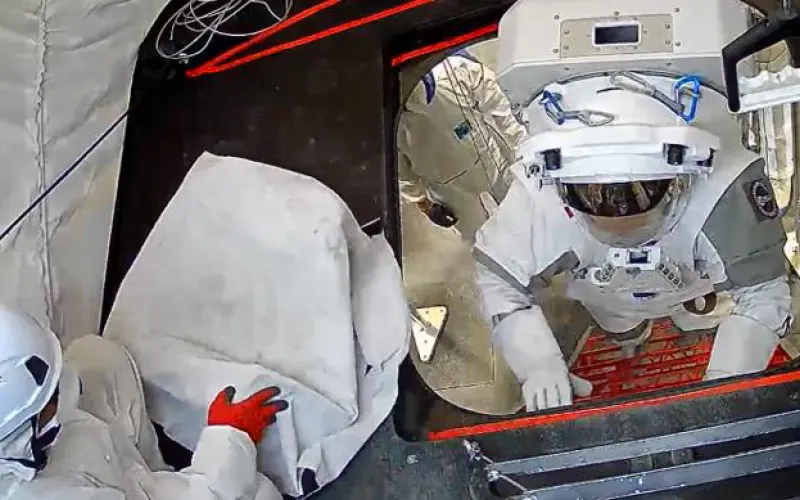Spartan Space and Airbus Defence and Space have completed a feasibility study for a lunar habitat airlock, commissioned by the French aerospace agency CNES.
In September 2021, CNES launched its Lunar Integrated Shelter for Exploration (LISE) initiative. LISE is part of the agency’s Spaceship France programme, which focuses on developing core technologies for future crewed missions to the Moon and Mars. Through LISE, the agency aims to develop a range of reusable lunar habitat modules to support crewed missions to the Moon.
In late July, Spartan Space announced that it had, in cooperation with Airbus Defence and Space, concluded a fifteen-month feasibility study for an airlock that would enable the safe transition from a habitat to the surface of the Moon.
According to the company, the airlock addresses key challenges that would be faced during a mission to the Moon, including dust mitigation, crew safety, and thermal control. It also includes a dedicated lifting system that would enable the recovery of an incapacitated crew member from the lunar surface to an elevated habitat atop a lander.
A full-scale prototype of the airlock was tested in combination with the Spartan Space inflatable EUROHAB habitat. The testing took place at the DLR-ESA LUNA facility in Cologne, Germany, and made use of the facility’s ATLAS spacesuit simulator.
In a 27 July press release, Spartan Space stated that it is “now preparing to transition the airlock design into fully qualified flight hardware in the next stage of the program.” However, this appears to be aspirational, as the development of flight hardware would likely require an additional call for proposals from the agency.
As CNES wraps up the LISE lunar airlock feasibility study, it is progressing with a prototype of the LISE lunar power station module. A lunar power station would be utilized to supply electricity to infrastructure for crewed missions to the Moon’s surface, including rovers and other equipment.
In addition to its work on the LISE initiative, the agency, under the broader Spaceship France programme, has also begun work on a spacesuit, a project that involves sporting goods manufacturer Decathlon, and medical imaging technology that would be used for crewed missions to the Moon and Mars.
Despite Spaceship France being a seemingly extensive exploration initiative, the work remains largely disconnected from any concrete mission plans. Any crewed missions to the Moon would likely not be carried out by CNES in isolation. Instead, they would require a partnership with NASA, similar to the one Italy is pursuing for its own lunar habitat initiative, or adoption by ESA as part of a broader European programme.
